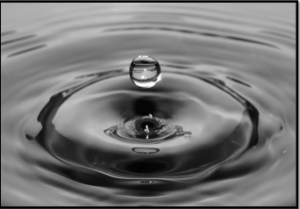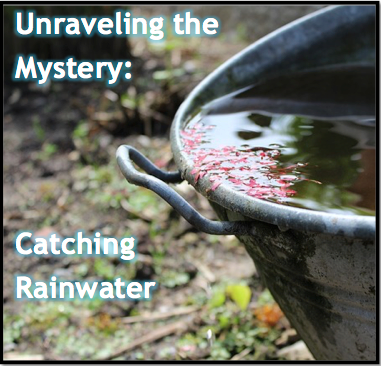Unraveling the Mystery: Catching Rainwater
Catching rainwater seems pretty straightforward, right? Just set something up for rain to land on and let it drain into a container, right? At its most simple, you would be correct but the full picture is a little more complicated than that. Since you likely intend on consuming the water you catch, you need to consider the filtering and storage, too. Depending on where you live, catching rainwater may even be illegal! I swear I’m not making this up! Read on…
Where I live, we get an average of 154 inches of rain a year. Yeah…it’s wet around here. Our sloppiest year brought us 14 feet! The upside of all that liquid sunshine is that you don’t have to really worry about where your drinking water will come from. Growing up, it was 100% normal to see large water cisterns with pipes that lead from the roof of the house into the water tank. Of course, even here in rural Alaska, laws are being enacted by local authorities against building water catch systems on any new construction but that is a rant for another time. This one is all about the system and things to consider when setting one up.
Assuming you want to catch water and consume it, there are 4 steps to the system:
Catching the Water
I know it seems incredibly simple and honestly, it is but there are many things you have to consider when it comes to catching and funneling rainwater to a drain. First off, is the area where the rain will fall mostly clean? Will it rot, rust, or grow mold? Can you get to it and clean it a couple times a year? Are there lots of trees around that will drop leaves onto the surface, eventually clogging the pipes to the holding tank? That water will have to go somewhere and if you don’t keep your drainage clear, it will go places you really never wanted it to.
 Once you have dealt with the surface, you need to pay attention to the piping (or gutters) that will carry the water into the holding tank. Will they freeze? Can you ensure as little debris as possible will make it into the holding tank? Can animals get into the pipes or the tank? How likely is it for birds or other animals’ feces get into the water? Is everything secure enough to handle high wind storms or long term downpours? Will it back up if the water is flowing too fast?
Once you have dealt with the surface, you need to pay attention to the piping (or gutters) that will carry the water into the holding tank. Will they freeze? Can you ensure as little debris as possible will make it into the holding tank? Can animals get into the pipes or the tank? How likely is it for birds or other animals’ feces get into the water? Is everything secure enough to handle high wind storms or long term downpours? Will it back up if the water is flowing too fast?
Holding the Water
Now that you have a suitable area to catch water (a roof, tarps set up, etc) and the drainage is good, you need to turn your attention to the holding tank. There are numerous ways to hold the water but, as before, there are many things to consider when setting your system up. You aren’t just holding the water, you are storing pre-filtered water. That means there are all sorts of bugs and nasties that can grow in there which can make you sick…. read more here: http://www.homesteaddreamer.com/2015/10/08/unraveling-the-mystery-catching-rainwater/
Utah Standard News depends on the support of readers like you.
Good Journalism requires time, expertise, passion and money. We know you appreciate the coverage here. Please help us to continue as an alternative news website by becoming a subscriber or making a donation. To learn more about our subscription options or make a donation, click here.
To Advertise on UtahStandardNews.com, please contact us at: ed@utahstandardnews.com.



Comments - No Responses to “Unraveling the Mystery: Catching Rainwater”
Sure is empty down here...